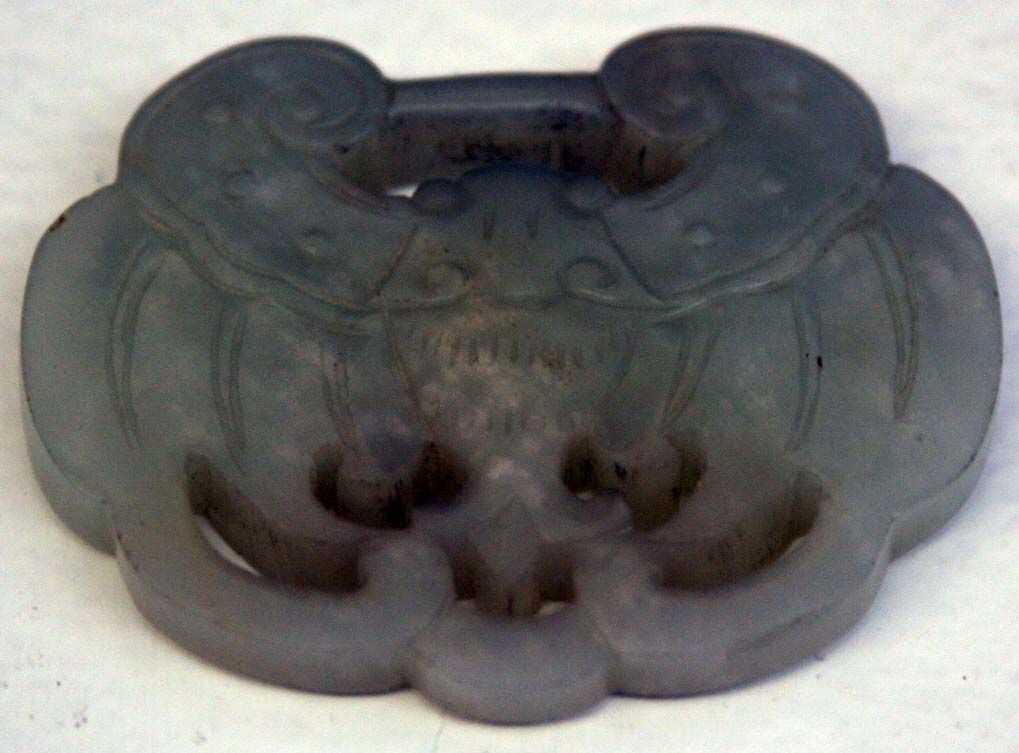Note
These pendants are carved out of Jade and were most likely ornamental. Jade is one of the most important materials in Chinese culture, and because of its rarity and difficulty to carve it is very expensive. Believed to be of supernatural origin, jade is associated with yang, the male half of the yin-yang Cosmic element. Important to funerary and religious ceremonies, it also conveys rank, power, and authority. It was described by Xu Shen (a Han dynasty philologist) as “A stone that is beautiful... There is warmth in its lustre and brilliance; this is its quality of kindness; its soft interior may be viewed from the outside revealing [the goodness] within; this is its quality of rectitude; its tone is tranquil and high and carries far and wide; this is its quality of wisdom; it may be broken but cannot be twisted; this is its quality of bravery; its sharp edges are not intended for violence; this is its quality of purity. (Translation adapted from Zheng Dekun)”.
The pendant on the right side depicts a crab which, in Chinese culture, commonly symbolized prosperity as well as social status which is evident in the material used to carve this particular pendant.
The pendant on the left depicts floral motifs, which are often found in Chinese decorative arts and clothing. Individual flowers hold their own special meaning, much like color and animals. Often, the petals of flowers are counted to ensure irregularity. An odd number of petals symbolizes the dynamic irregularity of the forces of life, and unopened buds symbolize the continuous journey of life.
